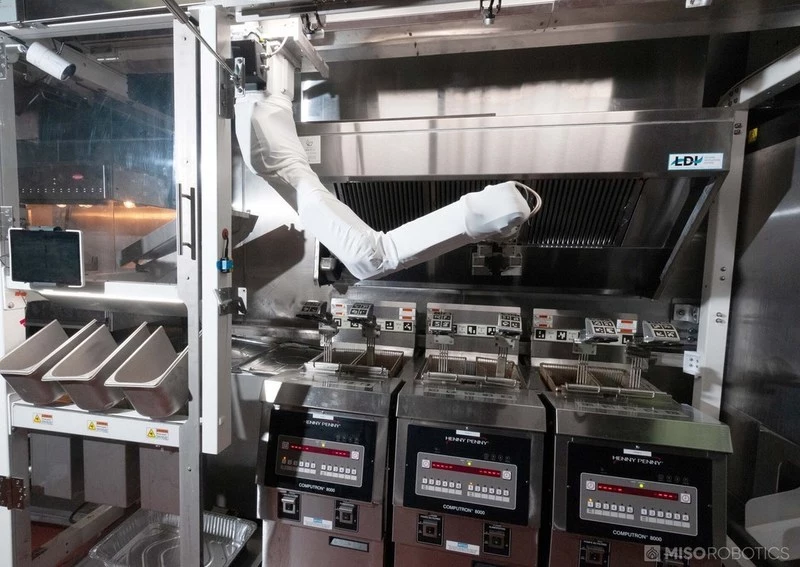Flippy the burger-flipping robot has received an upgrade as Miso Robotics rolls out its Flippy 2 model. Taking on board feedback from a pilot program with the White Castle hamburger chain that started in Chicago in September 2020, the new cybernetic chef boasts twice the food prep capabilities and can operate a fry station on its own.
The current economic situation is having a major impact on the hospitality industry, including fast food restaurants. Across the United States and other countries, many restaurants are suffering severe staff shortages, resulting in rising prices, reduced menus, shortened opening hours, and even complete closures. In this climate, it's not surprising that automation and even artificial intelligence are becoming increasingly attractive as an alternative to human kitchen staff.
Introduced in California in 2017, Flippy is a stand-alone robotic arm that uses computer vision and machine learning to perform simple kitchen tasks like working a burger grill while freeing up the humans for more interesting and less dangerous tasks than working in tight quarters around grills and hot oils.
As a robot, Flippy isn't bothered by long hours of labor-intensive, physically demanding tasks, but the White Castle pilot program demonstrated that the robot still has a lot of room for improvement. While Flippy is designed to work safely around humans and take up some of the workload, it turns out that the robot still needs its flesh and blood co-workers to step in at different times during complex tasks like working the fry station.
By combining the improved Flippy 2 with the new AutoBin system that can handle specialty foods like onion rings and chicken tenders in customizable bins, the robot can now perform twice as many food preparation tasks as the mark one, such as basket filling, emptying and returning. In addition, it can handle multiple fry bins, so vegetables and fish can be cooked at the same time without mixing their flavors.
According to Miso Robotics, Flippy 2 can handle about 60 baskets per hour, takes up 56 percent less aisle space and is 13 percent shorter than its predecessor. It also has fewer surfaces that need cleaning, allowing for greater cost reduction.
Along with White Castle, the company is also involved in pilot projects with other national brands as it works its way into the US$278.6-billion market.
"Like all technologies, Flippy 2 has evolved significantly from its predecessor, and we are extremely grateful for the insights collected from White Castle to truly push its development forward in a real restaurant environment," says Mike Bell, CEO of Miso Robotics. "Flippy 2 takes up less space in the kitchen and increases production exponentially with its new basket filling, emptying and returning capabilities. Since Flippy’s inception, our goal has always been to provide a customizable solution that can function harmoniously with any kitchen and without disruption. Flippy 2 has more than 120 configurations built into its technology and is the only robotic fry station currently being produced at scale."
Source: Miso Robotics





